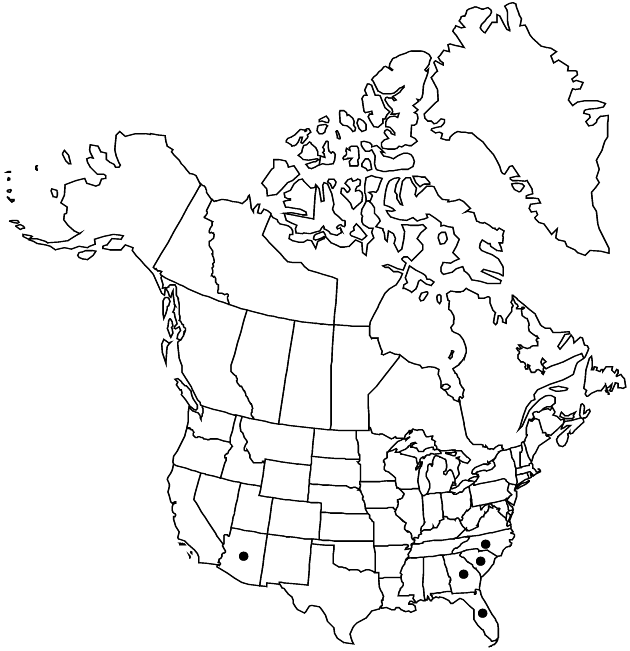Zinnia peruviana
Syst. Nat. ed. 10, 2: 1221. 1759.
Annuals, mostly 30–50 (–100) cm. Stems greenish, becoming purplish or yellowish, unbranched or sparingly branched distal to bases, strigose. Leaf-blades 3–5-nerved, ovate to elliptic or broadly lanceolate, 25–70 × 8–35 mm, scabrellous. Peduncles 10–50 (–70) mm. Involucres narrowly to broadly campanulate, 9–18 × 10–20 mm. Phyllaries obovate to oblong, becoming scarious, glabrous, apices rounded, usually entire or erose, sometimes ciliate. Paleae red to purple or yellow, apices obtuse, erose or subentire. Ray-florets 6–15 (–21); corollas usually scarlet red or maroon, sometimes yellow, laminae linear to spatulate, 8–25 mm. Disc-florets 12–50; corollas yellow, 5–6 mm, lobes ca. 1 mm. Cypselae 7–10 mm, 3-angled (ray) or compressed (disc), ribbed, ciliate; pappi usually of 1 stout awn 4–6 mm (from shoulders of cypselae). 2n = 24.
Phenology: Flowering summer–fall.
Habitat: Rocky roadsides, ravines, calcareous soils
Elevation: 1200–1600 m
Distribution

Ariz., Fla., Ga., N.C., S.C., Mexico, West Indies (Hispaniola), Central America, South America, in Asia (China), South Africa, Australia
Discussion
Zinnia peruviana is presumably native in southern Arizona and reported as naturalized in southeastern United States.
Selected References
None.